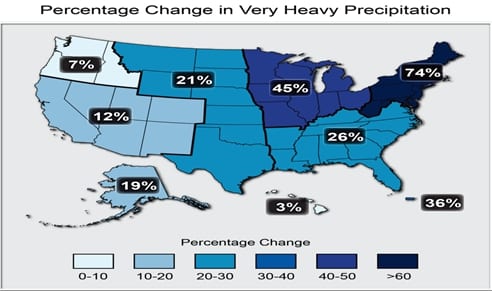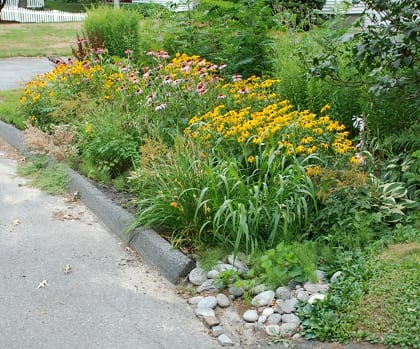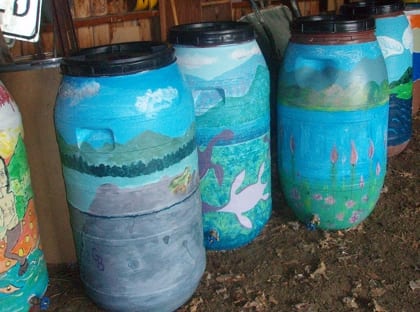 by Anne Leiby and Cindy Brown
by Anne Leiby and Cindy Brown
Stormwater runoff is a significant source of water pollution in the United States. As rain falls onto hard surfaces, such as roofs, roads, parking lots, sidewalks, and hard-packed grass, it picks up and carries with it a variety of pollutants including bacteria, heavy metals, nutrients, and sediment. These pollutants flow into rivers, lakes, streams and oceans and cause significant environmental degradation of precious water resources. Extreme precipitation events are increasingly common in certain parts of the country so addressing stormwater runoff through a variety of methods, including green infrastructure solutions that incorporate creative, and often beautiful, landscaping solutions, is more important than ever.

The map shows percent increases in the amount of precipitation falling in very heavy events (defined as the heaviest 1% of all daily events) from 1958 to 2011 for each region. There are clear trends toward a greater amount of very heavy precipitation for the nation as a whole, and particularly in the Northeast and Midwest. (Figure updated from Karl et al. 2009 with data from National Climate Data Center.) Source: January 2013 draft National Climate Assessment Report http://ncadac.globalchange.gov/.
In 2012, the New England office of the U.S. Environmental Protection Agency launched Soak up the Rain to help raise awareness and encourage citizen action to reduce polluted runoff. Connecting citizens to a wide variety of information and programs, Soak up the Rain promotes the planting of trees and rain gardens, the installation of rain barrels, permeable pavements and green roofs, as well as other practices that help to infiltrate rain water where it lands instead of allowing it to wash into streets and down storm drains. These green infrastructure practices use plants and soil to “soak up the rain,” helping to prevent pollution of local waters, reduce flooding, recharge groundwater, and beautify neighborhoods.

Soak Up the Rain promotes practices such as creation of rain gardens, like this one in Leominster, MA, where rain collects and infiltrates into the ground.
The Soak up the Rain website is loaded with information on how citizens can help soak up the rain. It is also a great resource for municipalities and others looking for outreach and implementation tools and ideas. Find links to everything from how-to guides and videos, a rain garden mobile app, and EPA’s newest tool, the Stormwater Calculator. The Calculator is a desktop tool that estimates annual rainfall and runoff from a specific site based on the local soil conditions, topography, and rainfall records. Whether you’re an urban planner, developer, landscape professional or homeowner, this tool helps balance land development and landscaping with green infrastructure.
Organizations at the state, regional, and local levels are creatively working to engage and educate citizens about stormwater through local demonstration projects, technical assistance, and community-based projects designed to raise the level of awareness about the importance of capturing stormwater. Landscape professionals increasingly recognize green infrastructure as an opportunity – a new business niche and a chance to be part of a movement.

Rain barrels painted by local youth are ready for residential installation in Vermont. Courtesy Winooski Natural Resources Conservation District.
EPA is using its website and social media tools to showcase projects and share information about what’s happening around New England. We have created a Soak up the Rain photo sharing group on flickr where we hope that people can get ideas and be inspired by each other’s efforts to beautify their neighborhoods and help protect local water resources. From college rain gardens to community rain barrel sales, people are sharing what they’ve done. For more information about Soak up the Rain, visit the website at http://www.epa.gov/region1/soakuptherain. You can also send an email to soakuptherain@epa.gov if you have any questions.
About the Authors
Anne Leiby and Cindy Brown work at the US EPA, Region 1 Office in Boston, MA. They, with other EPA colleagues, are responsible for the development and implementation of the Soak Up the Rain stormwater campaign in New England. They may be reached at soakuptherain@epa.gov.


